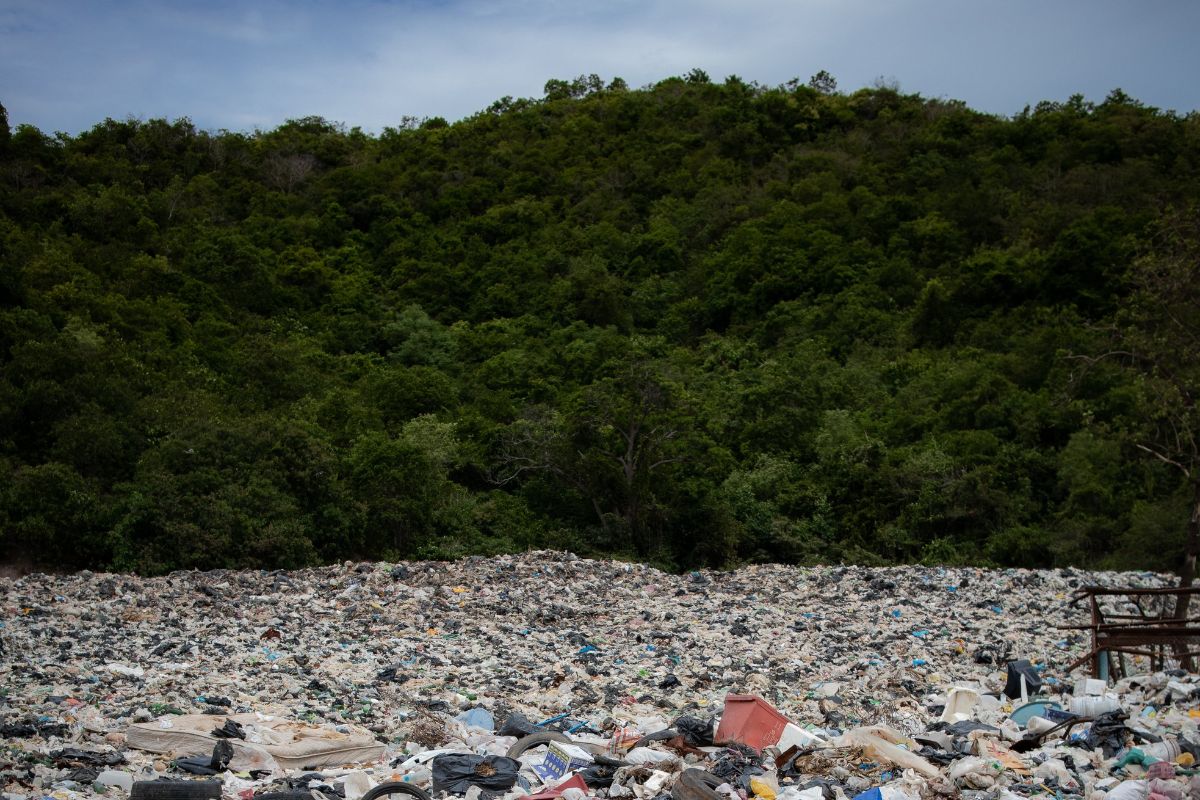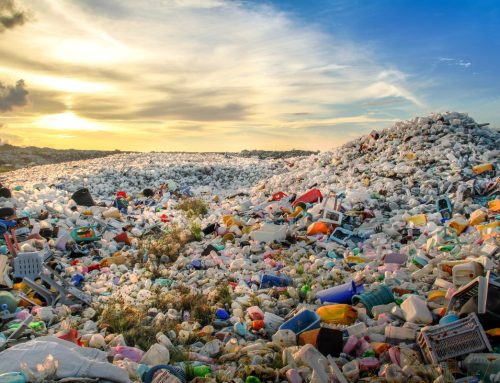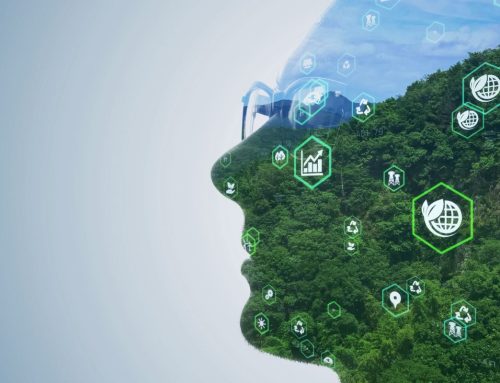What is pollution?
Pollution is the process by which various harmful substances or forms of energy are introduced into the natural environment, causing disturbances, discomfort, or detrimental effects to ecosystems, living organisms, and the environment as a whole. It is a complex and multifaceted issue that encompasses various types, such as air pollution, water pollution, soil contamination, noise pollution, light pollution, and more.
Air pollution
Air pollution occurs when the atmosphere is tainted by emissions from industrial activities, vehicular exhaust, burning fossil fuels, and other sources. This leads to the release of harmful gases like carbon monoxide, sulfur dioxide, nitrogen oxides, and particulate matter, which not only deteriorate air quality but also contribute significantly to respiratory problems, cardiovascular diseases, and climate change.
Water pollution
Water pollution refers to the contamination of water bodies such as rivers, lakes, oceans, and groundwater, caused by the discharge of pollutants like chemicals, heavy metals, plastics, sewage, and agricultural runoff. This pollution poses serious threats to aquatic ecosystems, disrupting the balance of marine life, harming wildlife, and rendering water unfit for consumption, thus endangering human health.
Land pollution
Land pollution involves the accumulation of waste, toxic chemicals, pesticides, and other harmful materials on the Earth’s surface. Improper disposal of solid waste, industrial byproducts, and the presence of hazardous substances in soil degrade soil quality, affect plant growth, contaminate food sources, and can seep into groundwater, further exacerbating the issue of water pollution.
Humans and pollution
Pollution not only impacts the environment but also poses grave health risks to humans and wildlife. It contributes to the loss of biodiversity, disrupts ecosystems, and leads to long-term environmental degradation. Addressing pollution requires concerted efforts at local, national, and global levels, including stringent regulations, sustainable practices, technological innovations, public awareness campaigns, and a shift towards cleaner energy sources to mitigate its detrimental effects and safeguard the health of our planet.

What is biodiversity
Biodiversity, short for biological diversity, refers to the variety and variability of life forms on Earth, encompassing all living organisms, ecosystems, and ecological processes. It includes diversity within species, between species, and of ecosystems. This diversity exists at multiple levels, from the genetic variations within a species to the vast array of different species and their interactions within ecosystems.
At the genetic level, biodiversity highlights the differences in genes among individuals of the same species. This diversity is crucial for species to adapt and survive in changing environments, providing the raw material for evolution and the development of new traits.
Diversity between species
Biodiversity encompasses the wide array of plants, animals, fungi, microorganisms, and other living beings coexisting on Earth. Each species possesses distinct characteristics and plays unique roles crucial to ecosystem function. Interactions among species, including pollination, predation, and symbiosis, are pivotal for sustaining ecosystem balance and stability.
Additionally, biodiversity encapsulates various habitats, communities, and ecological processes across different regions, spanning diverse ecosystems such as forests, grasslands, wetlands, oceans, deserts, each fostering numerous species specifically adapted to their respective environments.
Biodiversity in our lives
Biodiversity plays a critical role in sustaining life on Earth. It provides essential ecosystem services like clean air and water, soil fertility, pollination of crops, regulation of climate, and natural resources crucial for human well-being. Moreover, biodiversity contributes to scientific research, medicine, and the cultural and aesthetic value of nature.
However, human activities such as habitat destruction, pollution, climate change, overexploitation of resources, and the introduction of invasive species have led to a rapid decline in biodiversity worldwide. Protecting and conserving biodiversity is essential for the health of ecosystems, the resilience of species, and the sustainability of life on our planet. Efforts towards biodiversity conservation involve preserving habitats, adopting sustainable practices, creating protected areas, and raising awareness about the importance of biodiversity for present and future generations.
The effects of pollution on biodiversity
Pollution can disrupt the intricate balance within ecosystems, leading to a decline in biodiversity. One key impact of pollution on biodiversity is its ability to directly harm various species and their habitats. For instance, pollutants introduced into water bodies can negatively affect aquatic life by causing diseases, altering reproductive patterns, and even leading to the death of species. Similarly, air pollution can significantly impact plants, reducing their ability to grow and reproduce, which in turn affects the entire ecosystem as these plants form the foundation of many food chains.
Pollution’s influence on ecological Dynamics
Moreover, pollution can also indirectly affect biodiversity by altering ecological relationships and disrupting natural processes. For example, pollutants can accumulate in the food chain, leading to biomagnification, where toxins become more concentrated as they move up through different trophic levels. This can result in severe health issues and population declines in species at higher trophic levels.
The Hidden Consequence of Habitat Disruption
Furthermore, pollution-induced changes in ecosystems can lead to habitat degradation or loss, making it challenging for certain species to survive. This loss of habitat directly affects biodiversity by reducing the available resources and suitable living spaces for different organisms, leading to a decrease in species diversity within an area.
Pollution’s Toll on Ecosystem Integrity
Overall, pollution’s impact on biodiversity extends beyond direct harm to individual species. It interferes with the intricate interactions between organisms, disrupts food chains, alters ecosystems, and ultimately poses a threat to the variety and richness of life forms on our planet. Addressing pollution is crucial in preserving biodiversity and maintaining the health and balance of ecosystems essential for the survival of numerous species.

What can we do to reduce effects of pollution on biodiversity
Reducing the effects of pollution on biodiversity requires a concerted effort at various levels, incorporating individual actions, community initiatives, governmental policies, and global cooperation. Here are several strategies that can help mitigate the impact of pollution on biodiversity:
-
Adopt Sustainable Practices
- Embracing sustainable practices involves more than just the individual act of reducing, reusing, and recycling. It encompasses a holistic approach to lifestyle choices, embracing a circular economy model that aims to minimize waste production and maximize resource efficiency. This includes embracing practices like composting organic waste, supporting the use of biodegradable packaging, and promoting the sharing economy to reduce overall consumption. In agriculture, beyond organic farming, it involves regenerative practices that focus on soil health, biodiversity conservation, and water conservation, such as no-till farming, crop rotation, and agroforestry.
-
Use Clean Energy Sources
- Transitioning to clean energy sources not only involves adopting renewable energy but also entails advocating for the advancement of technology and infrastructure that supports their integration into mainstream energy grids. This means investing in research and development of cleaner energy technologies, supporting policies that incentivize their adoption, and promoting decentralized energy systems to reduce reliance on centralized fossil fuel-based energy generation.
-
Support Conservation Efforts
- Supporting conservation efforts involves active participation and advocacy for the protection and restoration of natural habitats. It includes volunteering for conservation projects, supporting organizations dedicated to biodiversity conservation, advocating for legislation that protects endangered habitats and species, and financially contributing to the establishment and maintenance of protected areas, marine reserves, and wildlife corridors.
-
Promote Environmental Education
- Environmental education goes beyond raising awareness; it involves fostering a deeper understanding of ecological systems, biodiversity, and the interconnections between human activities and the environment. This includes integrating environmental education into school curricula, organizing workshops and seminars, conducting nature-based learning experiences, and empowering communities to make informed decisions for sustainable living practices.
-
Advocate for Policies and Regulations
- Advocating for stronger environmental regulations necessitates active engagement with policymakers, lobbying for legislation that addresses pollution at its source, ensuring strict enforcement of existing environmental laws, and advocating for international agreements aimed at biodiversity conservation and pollution reduction. It also involves supporting policies that encourage industries to adopt cleaner production methods, reduce emissions, and transition towards sustainable practices.
-
Reduce Chemical Usage
- Beyond minimizing chemical usage, it involves promoting agroecological practices that prioritize natural pest control methods, crop rotation, and the use of organic fertilizers. It involves educating farmers and landscapers about the adverse effects of chemical inputs on biodiversity and advocating for governmental subsidies and incentives to promote eco-friendly agricultural practices.
-
Engage in Responsible Consumerism
- Responsible consumerism entails not just choosing eco-friendly products but also supporting ethical and sustainable production practices. It involves advocating for transparency in supply chains, supporting fair trade initiatives, choosing products with minimal packaging or made from recycled materials, and encouraging corporations to adopt sustainable business practices through consumer pressure and activism.
-
Participate in Restoration Efforts
- Engaging in restoration efforts involves active participation in community-based projects aimed at rehabilitating degraded habitats. This could include volunteering for reforestation drives, wetland restoration programs, and local clean-up initiatives aimed at revitalizing ecosystems. It also involves supporting policies that prioritize ecological restoration and incentivize conservation efforts.
-
Support Research and Innovation
- Investing in research and innovation involves supporting scientific endeavors aimed at developing cleaner technologies, waste reduction methods, and pollution mitigation strategies. It includes funding scientific studies on biodiversity conservation, ecosystem restoration, and sustainable resource management. It also involves fostering collaborations between academia, industry, and governmental institutions to drive innovation in environmental technologies and practices.
-
Practice Responsible Tourism
- Responsible tourism involves more than choosing eco-friendly accommodations; it encompasses respecting local cultures, minimizing the environmental impact of travel, and supporting local communities. This includes engaging in ecotourism activities that promote environmental awareness, respecting wildlife and natural habitats, minimizing carbon footprint during travel, and supporting local conservation efforts and sustainable tourism initiatives.
-
Encourage Green Infrastructure
- Encouraging green infrastructure involves advocating for the incorporation of nature-based solutions into urban planning and development. This includes promoting green roofs, urban gardens, and green spaces within cities to mitigate urban heat islands, improve air quality, and provide habitats for various species. It also involves supporting policies that mandate green infrastructure in urban development plans.
-
Implement Sustainable Fisheries Practices
- Beyond supporting sustainable fishing methods, it involves advocating for regulations that protect marine biodiversity and ecosystems. This includes promoting ecosystem-based management approaches, implementing catch limits, supporting marine protected areas, and encouraging sustainable fishing practices that prioritize conservation of marine habitats and species.
-
Reduce Plastic Usage
- Reducing plastic usage involves more than personal consumption habits; it includes advocating for policies that limit single-use plastics, supporting recycling infrastructure, and promoting alternatives to plastics. It involves organizing and participating in clean-up drives in coastal areas, riversides, and marine environments to prevent plastic pollution and its detrimental effects on marine life.
-
Invest in Clean Transportation
- Advocating for and utilizing clean transportation options goes beyond personal choices; it involves supporting infrastructure development, policy changes, and technological advancements. This includes advocating for the expansion of public transportation systems, investing in bicycle lanes and pedestrian-friendly infrastructure, incentivizing the adoption of electric vehicles through subsidies or tax benefits, and promoting the use of alternative fuels to reduce emissions. Supporting clean transportation initiatives helps mitigate air pollution, thereby improving air quality in urban areas and reducing the negative impact of transportation-related pollution on biodiversity.
-
Promote Green Infrastructure in Agriculture
- Promoting green infrastructure in agriculture involves advocating for farming practices that prioritize environmental sustainability and biodiversity conservation. This includes encouraging agroecological approaches that integrate diverse crops, utilize agroforestry systems, and implement natural pest control methods such as biological control, crop rotation, and habitat diversification. Supporting these practices minimizes the use of chemical inputs, preserves soil health, enhances biodiversity on farmlands, and contributes to ecosystem resilience.
-
Support Indigenous and Local Knowledge
- Recognizing and integrating traditional ecological knowledge of indigenous communities is crucial for effective biodiversity conservation. Indigenous knowledge often encompasses centuries-old practices that have sustained ecosystems and biodiversity. Collaborating with indigenous communities involves respecting their expertise, involving them in decision-making processes, and integrating their wisdom into conservation strategies. This collaboration enhances the understanding of ecosystems and fosters more effective, culturally sensitive conservation practices.
-
Create Wildlife Corridors
- Establishing and maintaining wildlife corridors or green corridors involves connecting fragmented habitats to facilitate the movement of species. This includes advocating for the designation and protection of wildlife corridors, supporting landscape planning that prioritizes connectivity, and implementing conservation easements or land-use policies that promote corridor development. Wildlife corridors enable species to migrate, disperse, and maintain genetic diversity, thereby enhancing ecosystem resilience and supporting biodiversity conservation.
-
Regenerate Degraded Ecosystems
- Investing in ecosystem restoration projects focuses on repairing and revitalizing degraded habitats. This involves actively participating in reforestation initiatives, wetland restoration efforts, mangrove rehabilitation programs, and other restoration projects aimed at recovering ecosystems that have been impacted by human activities. Supporting such restoration efforts helps recover habitats, enhances biodiversity, restores ecosystem functions, and contributes to the long-term sustainability of ecosystems.
-
Monitor Pollution Levels
- Implementing effective monitoring programs for pollution involves establishing comprehensive systems to continuously assess pollution levels in air, water, and soil. This includes deploying monitoring stations, utilizing advanced sensing technologies, and conducting regular assessments of pollution sources and their impacts. Continuous monitoring enables informed decision-making, facilitates early detection of pollution hotspots, and allows for prompt action and policy adjustments to mitigate pollution’s adverse effects on biodiversity.
-
Encourage Citizen Science Initiatives
- Engaging communities in citizen science programs promotes public participation in environmental data collection, analysis, and decision-making processes. This involves organizing citizen science projects focused on collecting data related to biodiversity, pollution, and ecosystem health. Encouraging public involvement in such initiatives fosters environmental awareness, empowers individuals to contribute to conservation efforts, and generates valuable data for evidence-based policymaking and environmental management.
-
Promote Sustainable Urban Design
- Sustainable urban design involves creating cities that prioritize green spaces, biodiversity, and environmental health. It encompasses strategies like incorporating parks, gardens, and natural reserves within urban areas, constructing green infrastructure such as permeable pavements to reduce runoff and flooding, and implementing zoning laws that protect natural habitats and encourage wildlife-friendly urban planning. By integrating nature into urban settings, sustainable design supports diverse flora and fauna while improving the overall quality of life for residents.
-
Implement Green Roofs and Walls
- Green roofs and walls involve installing vegetation on building surfaces to enhance biodiversity and mitigate the urban heat island effect. These installations provide habitats for insects, birds, and plant species while improving air quality, reducing energy consumption by insulating buildings, and managing stormwater runoff.
-
Support Wetland Conservation
- Wetlands are vital ecosystems that support a wide array of plant and animal species while providing essential ecological services like water filtration and flood control. Supporting wetland conservation involves protecting existing wetlands from further degradation, restoring degraded wetlands, and creating buffer zones around them to prevent pollution from entering these sensitive areas.
-
Establish No-Take Marine Reserves
- No-take marine reserves or marine protected areas are designated zones where fishing, mining, and other human activities are restricted or prohibited. These reserves enable marine ecosystems to recover from human-induced stressors, preserve biodiversity, protect endangered species, and serve as important research sites to understand marine ecology.
-
Encourage Sustainable Logging Practices
- Sustainable forestry practices aim to reduce the negative impacts of logging on biodiversity. This involves selective logging, reforestation efforts, avoiding clear-cutting, and implementing logging techniques that mimic natural disturbances. By prioritizing forest health and diversity, sustainable logging practices help maintain ecosystem balance and support a variety of plant and animal species.
-
Enhance Green Connectivity
- Green corridors or wildlife corridors are pathways that connect fragmented habitats, allowing species to move between isolated areas. Creating and maintaining these corridors promote genetic diversity, facilitate species migration, and reduce the risk of local extinctions caused by habitat fragmentation.
-
Promote Low-Impact Infrastructure
- Low-impact infrastructure includes designing roads, bridges, and tunnels that consider wildlife movement and migration patterns. Wildlife-friendly infrastructure incorporates features like animal crossings, underpasses, and bridges, reducing collisions between vehicles and wildlife and preventing habitat fragmentation.
-
Invest in Green Technology Research
- Research and development of green technologies focus on innovative solutions to reduce pollution and its impact on biodiversity. This includes advancements in water purification systems, air filtration technologies, renewable energy sources, and eco-friendly materials that minimize environmental harm.
-
Foster Cross-Sector Collaboration
- Collaborative efforts among governmental bodies, non-governmental organizations (NGOs), businesses, and local communities are crucial to developing comprehensive strategies for pollution reduction and biodiversity conservation. By pooling resources, expertise, and efforts, these collaborations can address environmental challenges more effectively.
-
Enhance Environmental Monitoring
- Advanced monitoring systems using cutting-edge technology such as remote sensing, drones, and satellite imagery play a pivotal role in assessing pollution levels and their impact on biodiversity. Real-time data collection and analysis allow for timely interventions and informed decision-making to protect vulnerable ecosystems and species. Establishing comprehensive monitoring programs aids in identifying pollution sources, assessing environmental changes, and evaluating the success of conservation efforts.
A fight for everyone
Safeguarding biodiversity from the ravages of pollution necessitates a concerted global effort. Implementing stringent regulations, advancing sustainable practices, investing in clean technologies, and fostering environmental education are pivotal steps toward curbing pollution. The collective actions of individuals, communities, industries, and governments are imperative in mitigating pollution’s devastating impact and preserving the rich tapestry of life that constitutes Earth’s biodiversity.
Help the planet whit Roll’eat
Among these efforts lies the innovation of Roll’eat’ products like the Boc’n’Roll—an eco-friendly alternative to disposable food wraps and bags. This product symbolizes a shift toward sustainable consumption habits, reducing single-use plastic waste and contributing to pollution prevention.
Such initiatives, coupled with broader systemic changes and heightened environmental awareness, offer hope in combating pollution’s detrimental effects on biodiversity
As we rally together to protect our ecosystems and diverse life forms, embracing eco-conscious solutions becomes a crucial stride towards a cleaner, healthier, and more biodiverse world.









